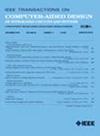RoboSpike:在ROS中充分利用异构系统的子回调调度2
IF 2.9
3区 计算机科学
Q2 COMPUTER SCIENCE, HARDWARE & ARCHITECTURE
IEEE Transactions on Computer-Aided Design of Integrated Circuits and Systems
Pub Date : 2025-02-04
DOI:10.1109/TCAD.2025.3538615
引用次数: 0
摘要
人工智能(AI)的进步极大地推动了机器人技术的发展,需要采用具有多核cpu、gpu和加速器的异构计算架构来满足边缘计算日益增长的计算需求。这种异构性,再加上机器人应用固有的io密集型特性,给任务调度和资源管理带来了巨大的挑战。这些挑战对于努力最大化计算资源利用率的系统来说尤其尖锐,这不能通过回调级调度有效地解决。为了克服这些障碍,我们开发了RoboSpike,这是一个基于机器人操作系统2 (ROS 2)的系统解决方案。我们首先实现了一种子回调调度机制,利用协程来利用等待I/O操作的阻塞cpu。在此机制的基础上,我们扩展了设计以包含协处理器,并引入了自动调优算法以适应系统性能变化。最后,我们进行了响应时间分析,以确保RoboSpike可以及时预测。评估结果表明,RoboSpike实现了实质性的改进,在实际场景中将吞吐量提高了1.65-2.25倍。RoboSpike通过从回调级别细化粒度来增强ROS 2的调度能力,从而为机器人系统的性能改进开辟了新的机会,特别是在资源有限的复杂工作负载场景中。本文章由计算机程序翻译,如有差异,请以英文原文为准。
RoboSpike: Fully Utilizing the Heterogeneous System With Subcallback Scheduling in ROS 2
The advancement in artificial intelligence (AI) has greatly propelled the development of robotics, requiring the adoption of heterogeneous computing architectures with multicore CPUs, GPUs, and accelerators to meet the growing computational needs of edge computing. Such heterogeneity, coupled with the inherently IO-intensive nature of robotic applications, poses substantial challenges for task scheduling and resource management. These challenges are particularly acute for systems striving to maximize computational resource utilization, which cannot be effectively addressed through callback-level scheduling. To overcome these obstacles, we developed RoboSpike, a systematic solution built on the Robot Operating System 2 (ROS 2). We first implemented a subcallback scheduling mechanism utilizing coroutines to utilize the blocked CPUs which wait for I/O operations. Building on this mechanism, we extended the design to incorporate the coprocessor and introduced an auto-tuning algorithm to adapt to system performance variations. Finally, we performed the response time analysis to ensure that the RoboSpike is predictable in time. The evaluation results demonstrate that RoboSpike achieves substantial improvements, increasing throughput by 1.65–2.25 times in real-world scenarios. RoboSpike enhances the scheduling capabilities of ROS 2 by refining the granularity from the callback level, thus opening up new opportunities for performance improvement in robotic systems, especially in resource-limited scenarios with complex workloads.
求助全文
通过发布文献求助,成功后即可免费获取论文全文。
去求助
来源期刊
CiteScore
5.60
自引率
13.80%
发文量
500
审稿时长
7 months
期刊介绍:
The purpose of this Transactions is to publish papers of interest to individuals in the area of computer-aided design of integrated circuits and systems composed of analog, digital, mixed-signal, optical, or microwave components. The aids include methods, models, algorithms, and man-machine interfaces for system-level, physical and logical design including: planning, synthesis, partitioning, modeling, simulation, layout, verification, testing, hardware-software co-design and documentation of integrated circuit and system designs of all complexities. Design tools and techniques for evaluating and designing integrated circuits and systems for metrics such as performance, power, reliability, testability, and security are a focus.

 求助内容:
求助内容: 应助结果提醒方式:
应助结果提醒方式:


